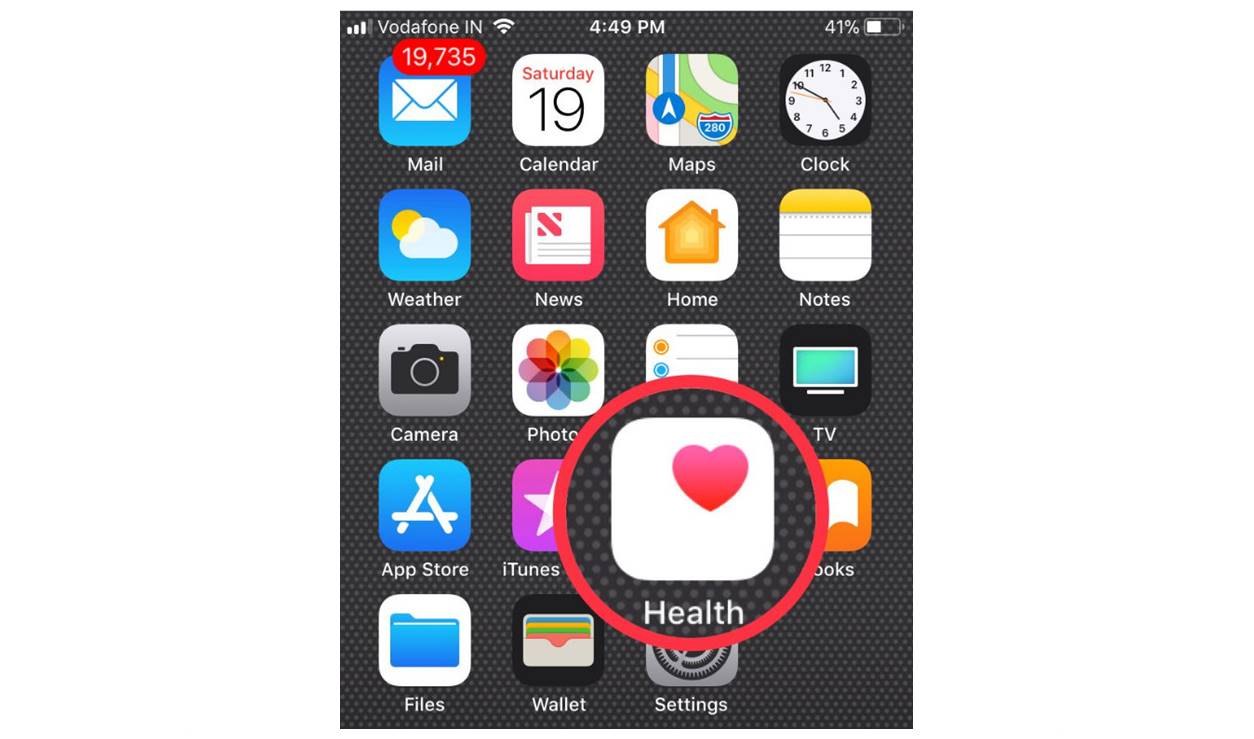

Featured
What Should My Workout Heart Rate Be
Modified: January 2, 2024
Discover the ideal workout heart rate for optimal results with our featured guide. Achieve your fitness goals efficiently and effectively.
Introduction
Welcome to the world of fitness and exercise! If you’re embarking on a workout routine, you may have come across the term “heart rate” and wondered what it means and why it’s important. Understanding your workout heart rate is crucial when it comes to maximizing the effectiveness of your exercise regimen.
Your heart rate is a measure of how fast your heart beats per minute. It is the driving force that pumps oxygen-rich blood to your muscles during physical activity. By monitoring your heart rate during exercise, you can ensure that you are working out at an intensity level that is both safe and effective for achieving your fitness goals. This is where the concept of target heart rate zones comes into play.
Target heart rate zones are specific heart rate ranges that correspond to different levels of intensity during exercise. These zones are typically expressed as a percentage of your maximum heart rate (MHR), which is the highest rate your heart can achieve during physical exertion. Knowing your target heart rate zone allows you to gauge the intensity of your workouts and adjust them accordingly.
But how do you determine your target heart rate zone and why is it important? In this article, we will delve into the factors influencing your workout heart rate, the benefits of exercising in your target heart rate zone, and how to monitor and adjust your workout intensity based on heart rate.
Whether you’re a seasoned athlete or a beginner taking your first steps into the world of fitness, understanding your workout heart rate is essential for optimizing your exercise routine and achieving your desired results. So, let’s dive in and discover the fascinating world of heart rate and how it can elevate your workouts to new heights!
Understanding Heart Rate
Before we delve into the intricacies of target heart rate zones, let’s first gain a clear understanding of what heart rate is and how it is measured. Your heart rate refers to the number of times your heart beats per minute, commonly denoted as BPM.
Heart rate is a vital sign that provides valuable information about your cardiovascular health and fitness level. It serves as an indicator of how hard your heart is working to pump oxygenated blood to the rest of your body, including your muscles, during physical activity.
Heart rate varies from person to person and can be affected by a variety of factors, such as age, fitness level, genetics, and overall health. As you engage in exercise, your heart rate tends to increase to meet the demands of your muscles and provide them with the necessary oxygen and nutrients they need to function optimally.
The most accurate way to measure your heart rate is by using a heart rate monitor. These devices can be worn around your chest or wrist and detect the electrical signals generated by your heart. They provide real-time data on your heart rate, allowing you to monitor your intensity levels during workouts.
Heart rate can also be measured manually by locating your pulse in certain areas of your body, such as the wrist or neck, and counting the number of beats in a specific time frame, such as 15 seconds, then multiplying it by four. However, this method may not be as accurate as using a heart rate monitor.
Knowing your resting heart rate, which is your heart rate at a state of complete rest, can also be beneficial in determining your fitness level. Typically, a lower resting heart rate indicates a higher level of cardiovascular fitness because it means that your heart is efficient at pumping blood even when at rest.
Now that we have a solid understanding of what heart rate is and how it is measured, let’s move on to explore the various factors that can influence your workout heart rate.
Factors Affecting Workout Heart Rate
Several factors can influence your workout heart rate, and understanding these factors is essential for optimizing your exercise regimen. Let’s take a closer look at each of them:
- Fitness Level: Your fitness level plays a significant role in determining your workout heart rate. Generally, individuals who are more physically fit tend to have a lower resting heart rate and a higher maximum heart rate. As your fitness level improves, your heart becomes stronger and more efficient, allowing it to pump blood with less effort.
- Age: Age is another factor that affects your heart rate during exercise. As you get older, your maximum heart rate gradually decreases. This means that you may need to adjust your target heart rate zones as you age to ensure you’re exercising at the appropriate intensity level.
- Gender: In general, men tend to have a slightly higher heart rate than women. However, individual variations within genders still exist, so it’s essential to focus on your personal heart rate ranges rather than relying solely on gender-based averages.
- Body Composition: Your body composition, including factors such as body fat percentage and muscle mass, can impact your workout heart rate. Higher levels of body fat can lead to an increased heart rate during exercise, as excess weight puts additional strain on the cardiovascular system.
- Medications and Health Conditions: Certain medications and health conditions can affect your heart rate. For example, beta-blockers, commonly prescribed for high blood pressure, can lower heart rate. It’s essential to consult with your healthcare provider if you have any underlying medical conditions or if you’re taking medications that may impact your heart rate.
- Environmental Factors: Environmental factors, such as altitude, temperature, and humidity, can also influence your heart rate during exercise. Higher altitudes and extreme temperatures can put additional stress on the body, increasing heart rate to maintain proper circulation.
It’s crucial to consider these factors when determining your target heart rate zones. By understanding how these factors influence your heart rate, you can adjust and personalize your workouts to ensure you’re exercising at the right intensity for your individual needs and goals.
Determining Your Target Heart Rate Zone
Now that we’ve explored the factors that can affect your workout heart rate, let’s dive into how to determine your target heart rate zone. Your target heart rate zone is the range within which your heart rate should ideally fall during exercise to achieve the desired benefits.
There are several methods to calculate your target heart rate zone, with the most commonly used being the percentage of your maximum heart rate (MHR). To calculate your MHR, subtract your age from 220. For example, if you’re 30 years old, your estimated MHR would be 190 beats per minute (220 – 30 = 190).
Once you have determined your MHR, you can calculate your target heart rate zone by multiplying it by the desired percentage range. The most widely accepted target heart rate zones are:
- Resting Heart Rate: This is the heart rate at complete rest, usually measured in the morning before getting out of bed. Knowing your resting heart rate can provide a baseline measurement for your heart’s efficiency.
- Low Intensity Zone: This zone typically ranges from 50% to 60% of your MHR. It is ideal for beginners or individuals with low fitness levels. Workouts in this zone focus on building endurance and improving cardiovascular health.
- Moderate Intensity Zone: This zone usually ranges from 60% to 70% of your MHR. Workouts in this zone help improve overall fitness, burn calories, and enhance cardiovascular capacity.
- High Intensity Zone: This zone generally ranges from 70% to 85% of your MHR. Workouts in this zone are more challenging and can enhance cardiovascular fitness, improve speed and performance, and promote calorie burning.
- Maximum Intensity Zone: This zone is around 85% to 100% of your MHR. It is typically reserved for short bursts of high-intensity training and should be approached with caution and under the supervision of a fitness professional.
Keep in mind that these target heart rate zones are general guidelines, and individual variations may exist. Some factors, such as your fitness level and personal goals, may require adjustments to these ranges. It’s important to listen to your body and consult with a fitness professional to tailor your target heart rate zones to your specific needs.
By determining your target heart rate zone and understanding the corresponding intensity levels, you can make informed decisions about the intensity of your workouts and ensure that you’re getting the most out of your exercise routine.
Benefits of Exercising in Your Target Heart Rate Zone
Exercising in your target heart rate zone offers numerous benefits that can greatly enhance your overall fitness and well-being. Let’s explore some of the key advantages:
- Efficient Cardiovascular Conditioning: Exercising within your target heart rate zone ensures that your cardiovascular system is working optimally. By challenging your heart and lungs at an appropriate intensity, you can improve their efficiency, enhancing blood circulation and oxygen delivery to your muscles. This leads to improved cardiovascular endurance and overall physical fitness.
- Maximizing Calorie Burning: Exercising in your target heart rate zone helps maximize calorie burning and weight loss. When you work out at an intensity that elevates your heart rate, your body utilizes stored fat as a source of energy. Regularly exercising in your target heart rate zone can contribute to increased fat burning and improved body composition.
- Improved Endurance: Training within your target heart rate zone improves your aerobic capacity and endurance. As your cardiovascular system becomes more efficient, you can sustain higher exercise intensities for longer periods. This translates to improved performance in various physical activities, such as running, cycling, or participating in sports.
- Reduced Risk of Heart Disease: Regular exercise within your target heart rate zone is associated with a reduced risk of heart disease. It helps strengthen your heart muscle, lower blood pressure, and improve cholesterol levels. Additionally, exercising at a moderate intensity can decrease your resting heart rate over time, which is an indicator of a healthy heart.
- Mood Enhancement: Exercising in your target heart rate zone has a positive impact on your mood and mental well-being. Physical activity stimulates the release of endorphins, which are feel-good hormones that can boost your mood and reduce stress and anxiety. Regular exercise can also improve sleep quality, increase self-confidence, and promote overall mental clarity.
- More Efficient Workouts: By exercising within your target heart rate zone, you can ensure that your workouts are effective and efficient. It helps you avoid undertraining or overtraining, as working out at the right intensity level allows you to meet your specific fitness goals without risking injury or burnout.
Understanding the benefits of exercising in your target heart rate zone can motivate you to strive for the appropriate intensity during your workouts. Whether your goal is weight loss, building endurance, or improving overall fitness, exercising within your target heart rate zone can help you achieve optimal results.
Monitoring Your Heart Rate during Exercise
Monitoring your heart rate during exercise is essential to ensure that you are staying within your target heart rate zone and reaping the benefits of your workouts. By keeping track of your heart rate, you can make real-time adjustments to the intensity of your exercise and ensure you’re optimizing your training. Here are some key methods for monitoring your heart rate during exercise:
- Heart Rate Monitors: Utilizing a heart rate monitor is one of the most accurate ways to monitor your heart rate during exercise. These devices are available in the form of chest straps or wearable watches. Heart rate monitors provide real-time data, allowing you to adjust your intensity levels accordingly and stay within your target heart rate zone.
- Pulse Measurement: If you don’t have access to a heart rate monitor, you can measure your pulse manually. Locate your pulse at your wrist or neck and count the number of beats in a 15-second interval. Multiply the number by four to get your heart rate per minute. While this method is less precise, it can still provide a general indication of your heart rate during exercise.
- Perceived Exertion Scale: Another method to monitor your exercise intensity is by using the perceived exertion scale. This scale rates your effort on a scale of 1 to 10, with 1 being very light activity and 10 being maximum effort. Pay attention to how hard you feel your body is working during exercise, aiming to stay within the desired range for your target heart rate zone.
- Smartphone Apps: There are various smartphone apps available that can track your heart rate during exercise. These apps use the camera or sensors on your smartphone to detect your heart rate. While not as accurate as a heart rate monitor, they can still provide a rough estimate of your heart rate.
Whichever method you choose, it’s important to remember that heart rate can vary throughout your workout. Factors such as fatigue, hydration, and external stimuli can influence your heart rate response. It’s important to consider these factors and make adjustments to your workout intensity as necessary.
Monitoring your heart rate during exercise allows you to gauge whether you need to increase or decrease the intensity of your workout. If your heart rate is consistently below your target heart rate zone, you may need to increase the intensity to achieve the desired benefits. Conversely, if your heart rate is consistently above your target zone, you may need to decrease the intensity to avoid overexertion.
By monitoring your heart rate during exercise, you can ensure that you’re maximizing the effectiveness of your workouts and staying on track towards reaching your fitness goals.
Adjusting Your Workout Intensity Based on Heart Rate
Adjusting your workout intensity based on your heart rate is crucial for maintaining the optimal balance between effectiveness and safety during exercise. By paying attention to your heart rate, you can make necessary adjustments to ensure you’re working out at the right intensity level. Here are some tips for adjusting your workout intensity based on your heart rate:
- Increase or Decrease Pace: If your heart rate is consistently below your target heart rate zone, it may indicate that you’re not working out at a sufficient intensity. To increase your heart rate, you can try increasing your pace or intensity, whether it’s by running faster, cycling at a higher resistance, or incorporating more challenging exercises into your routine.
- Take Active Recovery Breaks: On the other hand, if your heart rate is consistently above your target heart rate zone, it may be an indication that you’re pushing too hard. To bring your heart rate down, try incorporating active recovery breaks into your workout. This can involve slowing down your pace, reducing resistance, or engaging in low-impact activities to allow your heart rate to gradually decrease.
- Modify Exercise Duration: Another way to adjust your workout intensity is by modifying the duration of your exercise session. If your heart rate is consistently above your target heart rate zone and you’re finding it difficult to regulate, you can consider shortening the duration of your workout to allow for more recovery time. Conversely, if your heart rate is consistently below your target zone, you may want to increase the duration to ensure you’re getting enough cardiovascular stimulation.
- Listen to Your Body: It’s essential to listen to your body’s cues and adjust your workout intensity accordingly. If you feel excessively fatigued or experience any discomfort, it may be a sign that you need to decrease your intensity. On the other hand, if you feel like you can increase your intensity without any issues, you can push yourself a bit further. Remember, it’s important to find a balance that challenges you without putting excessive strain on your body.
- Progress Gradually: As you continue to exercise and improve your fitness level, make gradual adjustments to your workout intensity. Your heart rate response may change over time, so reassessing your target heart rate zones periodically is important. Gradual progression ensures that you continue to challenge your cardiovascular system while minimizing the risk of injury or burnout.
Remember, heart rate is just one aspect of monitoring your workout intensity. It’s essential to listen to your body, be aware of other factors such as perceived exertion, and consult with a fitness professional if you have any concerns or specific goals.
By adjusting your workout intensity based on your heart rate, you can ensure that you’re working out at an intensity level that is both safe and effective for achieving your desired fitness outcomes.
Conclusion
Understanding and utilizing your target heart rate zone is key to maximizing the effectiveness of your workouts and achieving your fitness goals. By monitoring your heart rate during exercise and making adjustments to your intensity levels, you can ensure that you’re working out at the appropriate level for your individual needs and fitness level.
Throughout this article, we explored the importance of understanding heart rate and its measurement. We discussed the various factors that can influence your workout heart rate, including fitness level, age, gender, body composition, medications, and environmental factors. We then delved into how to calculate and determine your target heart rate zone based on your maximum heart rate (MHR).
Exercising within your target heart rate zone offers numerous benefits, such as efficient cardiovascular conditioning, increased calorie burning, improved endurance, reduced risk of heart disease, enhanced mood, and more efficient workouts. By staying within your target heart rate zone, you can optimize your workouts and achieve optimal results.
We also explored different methods for monitoring your heart rate during exercise, including heart rate monitors, pulse measurement, and perceived exertion scale. These methods allow you to accurately track your heart rate and make real-time adjustments to your workout intensity as needed.
Finally, we discussed the importance of adjusting your workout intensity based on your heart rate and listening to your body’s cues. Whether it’s increasing or decreasing your pace, taking active recovery breaks, modifying exercise duration, or progressing gradually, adjusting your workout intensity ensures that you’re challenging yourself appropriately without overexertion or undertraining.
Remember, fitness is a journey, and understanding and utilizing your target heart rate zone is just one piece of the puzzle. It’s important to consult with a fitness professional, listen to your body, and personalize your workouts to meet your specific needs and goals.
So, as you embark on your fitness journey, embrace the power of your heart rate and make it your ally. By harnessing the information provided by your heart rate, you can unlock the potential to elevate your workouts, improve your health, and transform your overall well-being.



